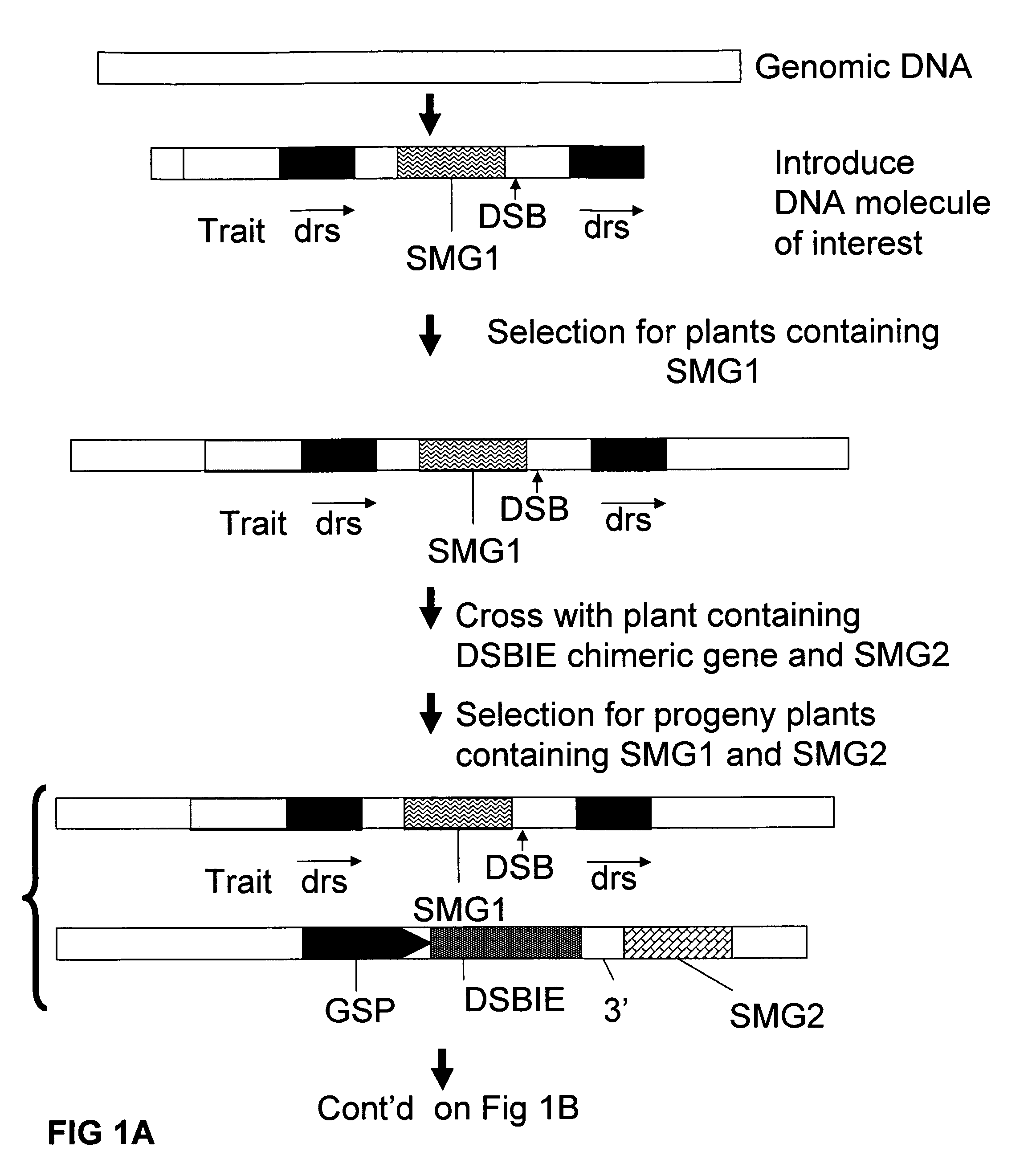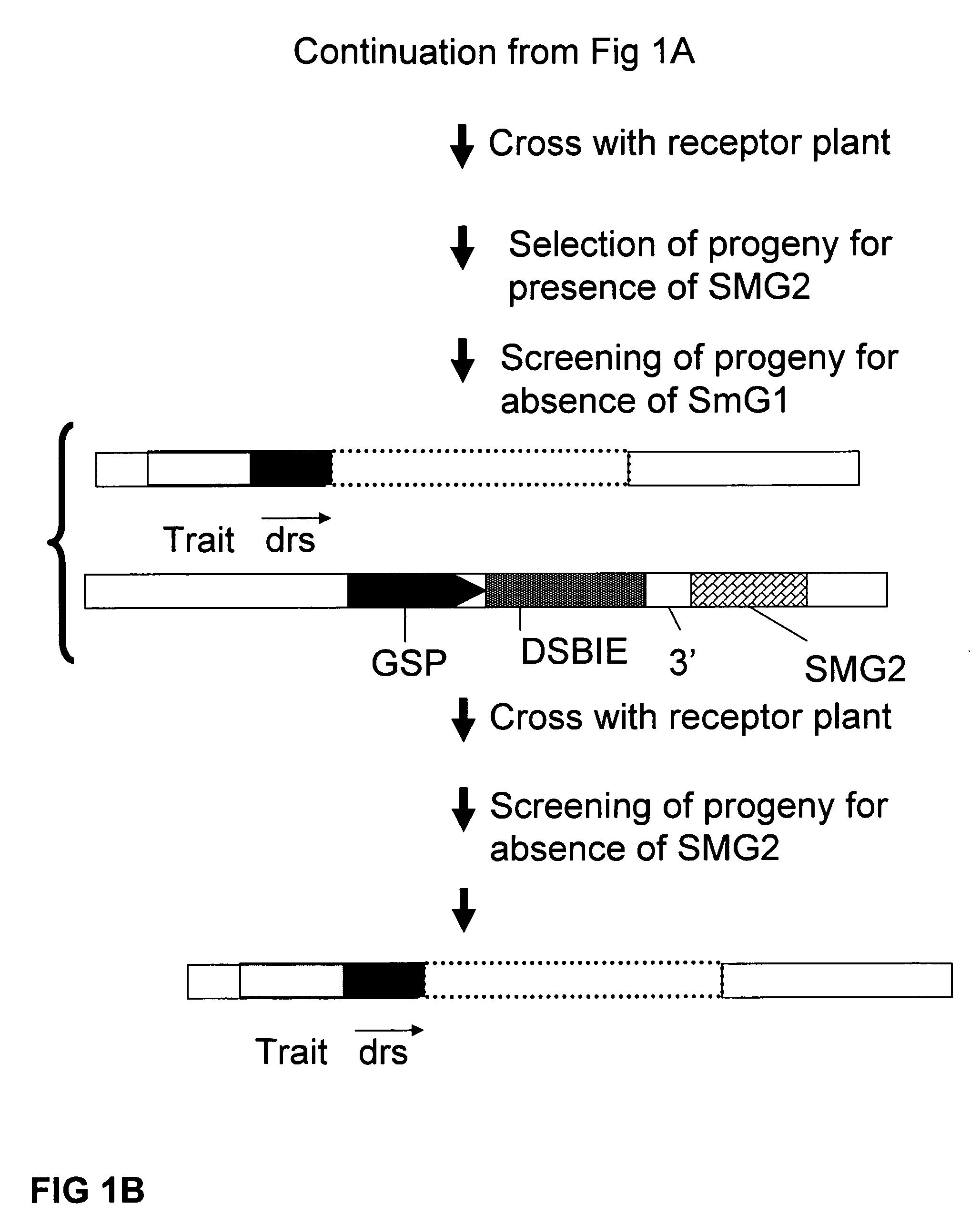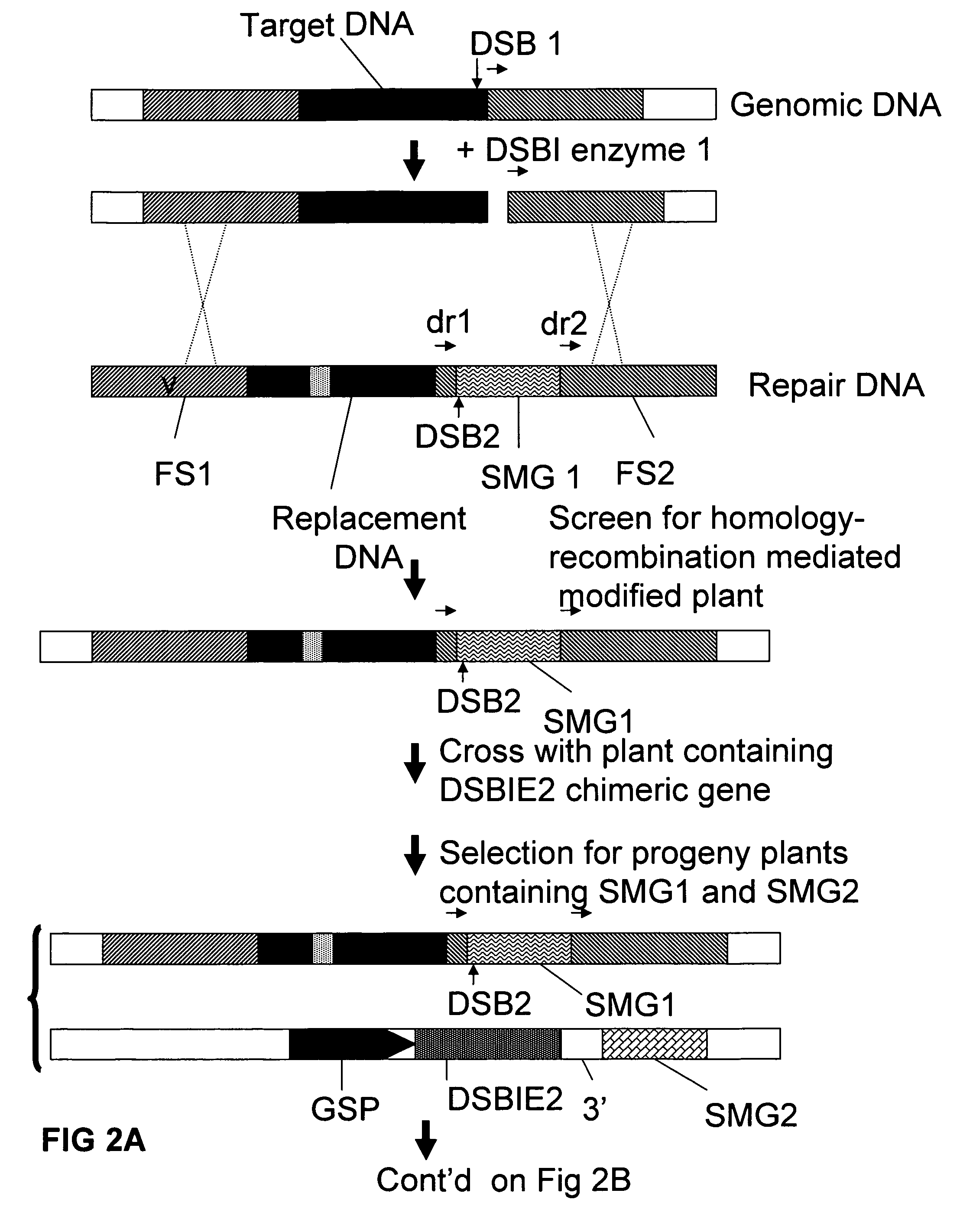Methods and means for removal of a selected DNA sequence
- Summary
- Abstract
- Description
- Claims
- Application Information
AI Technical Summary
Benefits of technology
Problems solved by technology
Method used
Image
Examples
examples
Removal of a Selectable Marker Gene by Intrachromosomal Homologous Recombination (IHR)
[0262]A recombination assay to detect removal of a selected DNA fragment has been developed based on the restoration of an egfp-bar fusion gene after removal of a selectable marker gene (hyg) (˜2000 bp) by intrachromosomal homologous recombination (IHR) between directly repeated sequences (part of egfp sequences; either about 300 bp or about 600 bp). One of the repeat sequences is flanked by an I-SceI (and Zinc finger Zif268) recognition site giving the possibility to create a DSB between the repeats. In order to allow the IHR during transition from one generation to another, the I-SceI endonuclease was placed under control of a microspore specific promoter (PNTM19).
[0263]Using standard recombinant DNA techniques, the following DNA molecules were constructed for use in the following experiments:[0264]1. pTCV63: with short direct repeat sequences (˜300 bp) containing the following operably linked DN...
PUM
| Property | Measurement | Unit |
|---|---|---|
| length | aaaaa | aaaaa |
| genetic structure | aaaaa | aaaaa |
| frequency | aaaaa | aaaaa |
Abstract
Description
Claims
Application Information
 Login to View More
Login to View More - R&D
- Intellectual Property
- Life Sciences
- Materials
- Tech Scout
- Unparalleled Data Quality
- Higher Quality Content
- 60% Fewer Hallucinations
Browse by: Latest US Patents, China's latest patents, Technical Efficacy Thesaurus, Application Domain, Technology Topic, Popular Technical Reports.
© 2025 PatSnap. All rights reserved.Legal|Privacy policy|Modern Slavery Act Transparency Statement|Sitemap|About US| Contact US: help@patsnap.com



